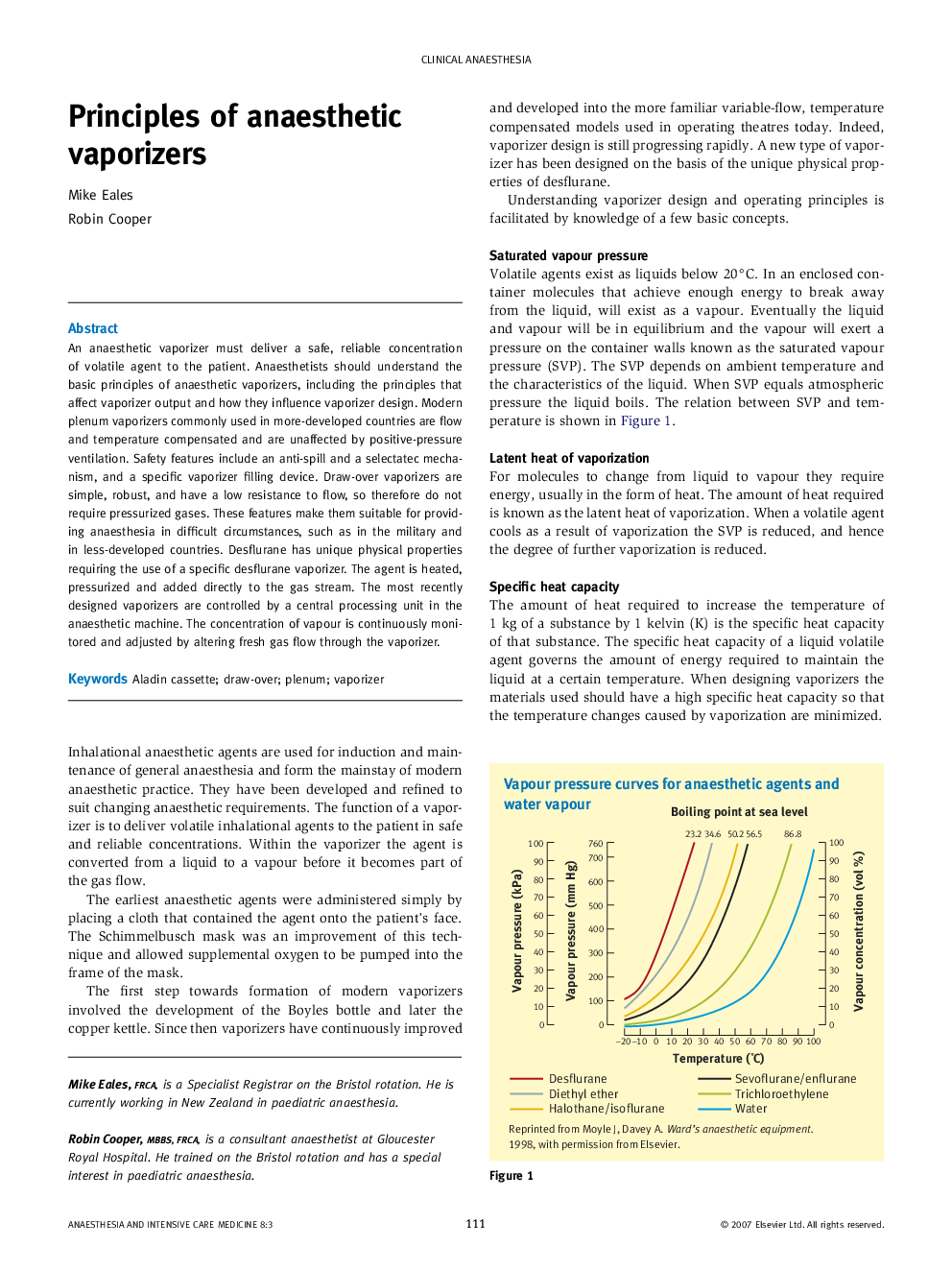| Article ID | Journal | Published Year | Pages | File Type |
|---|---|---|---|---|
| 2743736 | Anaesthesia & Intensive Care Medicine | 2007 | 5 Pages |
An anaesthetic vaporizer must deliver a safe, reliable concentration of volatile agent to the patient. Anaesthetists should understand the basic principles of anaesthetic vaporizers, including the principles that affect vaporizer output and how they influence vaporizer design. Modern plenum vaporizers commonly used in more-developed countries are flow and temperature compensated and are unaffected by positive-pressure ventilation. Safety features include an anti-spill and a selectatec mechanism, and a specific vaporizer filling device. Draw-over vaporizers are simple, robust, and have a low resistance to flow, so therefore do not require pressurized gases. These features make them suitable for providing anaesthesia in difficult circumstances, such as in the military and in less-developed countries. Desflurane has unique physical properties requiring the use of a specific desflurane vaporizer. The agent is heated, pressurized and added directly to the gas stream. The most recently designed vaporizers are controlled by a central processing unit in the anaesthetic machine. The concentration of vapour is continuously monitored and adjusted by altering fresh gas flow through the vaporizer.
